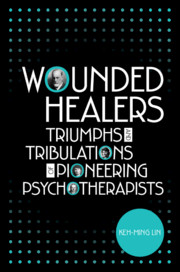References
Published online by Cambridge University Press: 17 December 2020
Summary

- Type
- Chapter
- Information
- Wounded HealersTribulations and Triumphs of Pioneering Psychotherapists, pp. 226 - 236Publisher: Cambridge University PressPrint publication year: 2020

